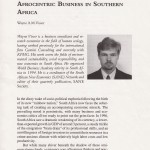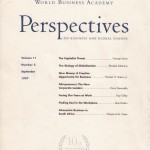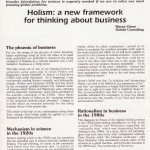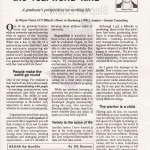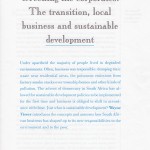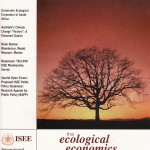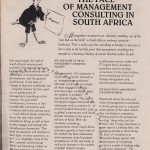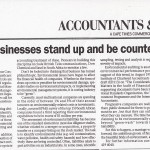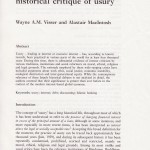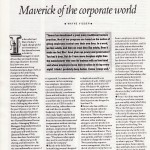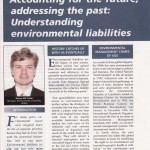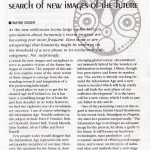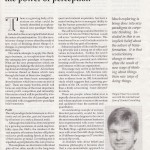Systems change requires multiple agents and dynamics
Article by Wayne Visser
Part of the Unlocking Change series for The Guardian.
If Shakespeare was right that “all the world’s a stage”, then consider this cast of characters: Svante Arrhenius, Al Gore, Franny Armstrong, Inez Fung, Mercedes Bustamante and Colin Beavan. Now imagine the stage is set with a few props – the IPCC (Intergovernmental Panel on Climate Change), the EU Emissions Trading Scheme (EU ETS) and the Copenhagen Accord. Finally, weave in some plot twists, such as Hurricane Katrina, Chinese solar subsidies and Fukushima.
We now have all the ingredients for an intriguing play about climate change – or, to be more precise, a story about how whole systems change happens.
Let’s begin with the individuals. Each represents a different type of person that is needed for societal change to be effective. Svante Arrhenius, the Swedish scientist who discovered the greenhouse effect in 1896 and linked it to fossil fuels, is typical of what we might call a genius heretic, someone who changes our paradigm, the way we see the world.
Al Gore, former US vice president and star of An Inconvenient Truth, might be regarded as an iconic leader, someone who uses charisma to communicate ideas and persuade us to change. Franny Armstrong, on the other hand, with her documentaries like McLibel and The Age of Stupid, as well as her 10:10 climate campaign, is more like a freedom fighter.
So here we have three cast members and three different kinds of change agency – paradigmatic, charismatic and activist. Each individual is fairly high profile and offers the possibility of bringing about relatively rapid transformation, using ideas, persuasion and action. So how are next three individuals different?
Ines Fung is a professor of atmospheric science at the University of California, Berkley, who has been working on climate change ever since she won the MIT Rossby Award for outstanding thesis of the year in 1971. She is what we could call a systematic scientist, patiently and persistently studying how things fit together.
Mercedes Bustamante is a director in the Ministry of Science, Technology and Innovation in Brazil and coordinator lead author of the 5th IPCC Assessment report on mitigation. Her work is all about finding leverage points to change behaviour in society – and especially in agriculture and forestry – so that we can prevent dangerous climate change.
Colin Beavan is neither scientist nor politician. However, he does do experiments. He is most well known for No Impact Man, a documentary account of his attempt to live in New York City for one year with as close to zero environmental impact as possible.
Again, we have three individuals, all advocating different pathways to change – what I call Cartesian, Newtonian and Gandhian strategies. They are typically not high profile people and the process of change is much slower, but they form essential spokes in the wheel of systems change.
Now what of our props and plots? The IPCC also represents a relatively gradual change strategy, but operates at a collective level using the principle of consensus. The EU ETS uses a different mechanism, creating price signals as incentives for behaviour change.
Meanwhile, the 2009 Copenhagen Accord, while disappointing to many, may still turn out to be the tipping point when all the world’s major nations – including developed, emerging and developing countries – finally agreed that deep cuts in global emissions are needed to avoid catastrophic climate change.
These three types of change – consensual, incentivised and pivotal – are slow societal processes that help to build the momentum towards more dramatic change. Our final trio represents revolutionary change, with catastrophic events like Hurricane Katrina, combining with rapid growth trends like the way massive Chinese government subsidies have halved solar panel costs since 2010.
We also have butterfly effects, things we could not have predicted, such as Germany’s policy response to the 2011 Fukushima nuclear disaster, putting it on a fast track to renewable energy. We can call these three types of change cataclysmic, exponential and chaotic.
So, taken together, what does it mean? By recognising the multiple agents and dynamics on the wheel of systems change, we start to see how shifts occur in society. At any one time, there needs to be activity in all four change triptychs – let’s call them invention, intention, evolution and revolution – as is happening with climate change.
We know the story of climate change is far from an end. If it were a three-act play, we’re undoubtedly still in act one. It is one of the issues that has caused the most disruptive change to society in recent decades and – as the recent IPCC 5th Assessment Report confirms – it will probably get worse before it gets better.
The bottom line is that we are gambling with our climate future, but we can still spread our bets. If we want real transformation in society – by choosing a plus two degree rather than a plus six degree world – our best chance is to keep spinning the wheel of systems change.
Download
[button size=”small” color=”blue” style=”download” new_window=”false” link=”http://www.waynevisser.com/wp-content/uploads/2013/10/article_unlocking_change2_wvisser.pdf”]Pdf[/button] Systems change requires multiple agents and dynamics (article)
Related websites
[button size=”small” color=”blue” style=”tick” new_window=”false” link=”http://www.waynevisser.com/books/the-quest-for-sustainable-business”]Link[/button] The Quest for Sustainable Business (book)
[button size=”small” color=”blue” style=”tick” new_window=”false” link=”http://www.csrinternational.org”]Link[/button] CSR International (website)
Cite this article
Visser, W. (2013) Systems change requires multiple agents and dynamics. The Guardian, 7 October 2013.









